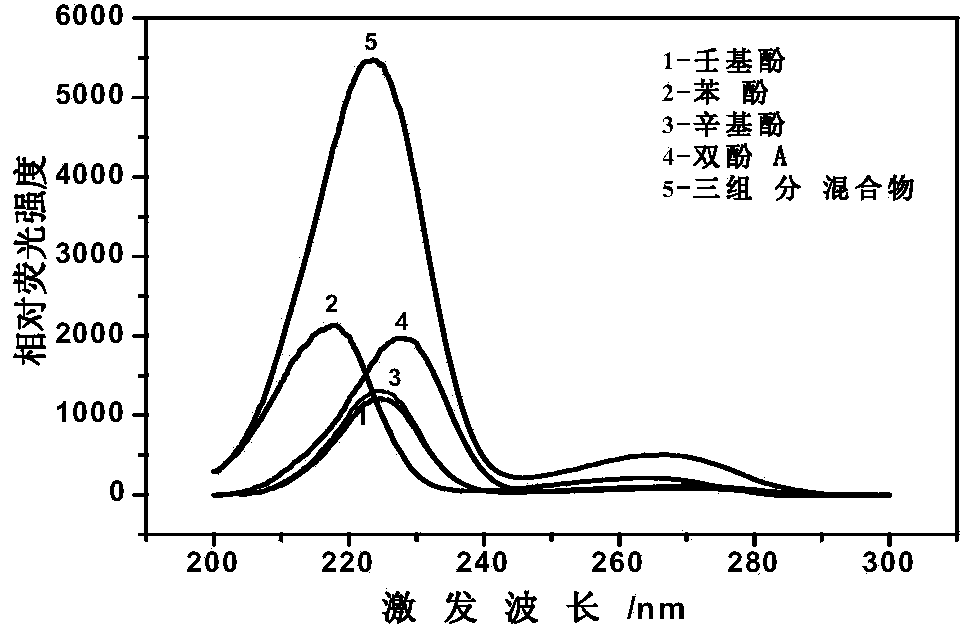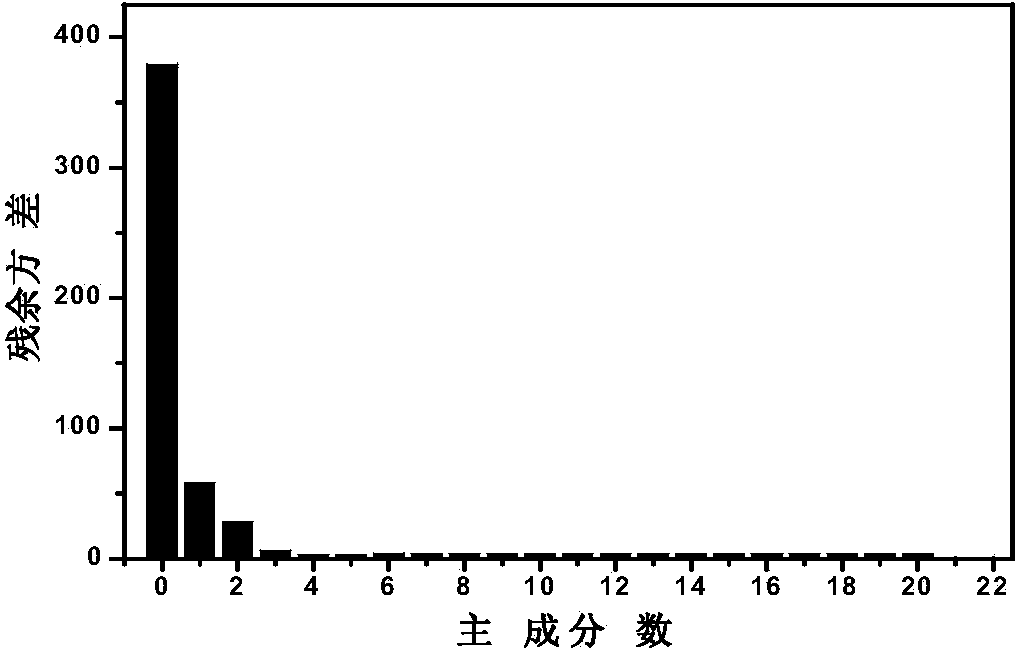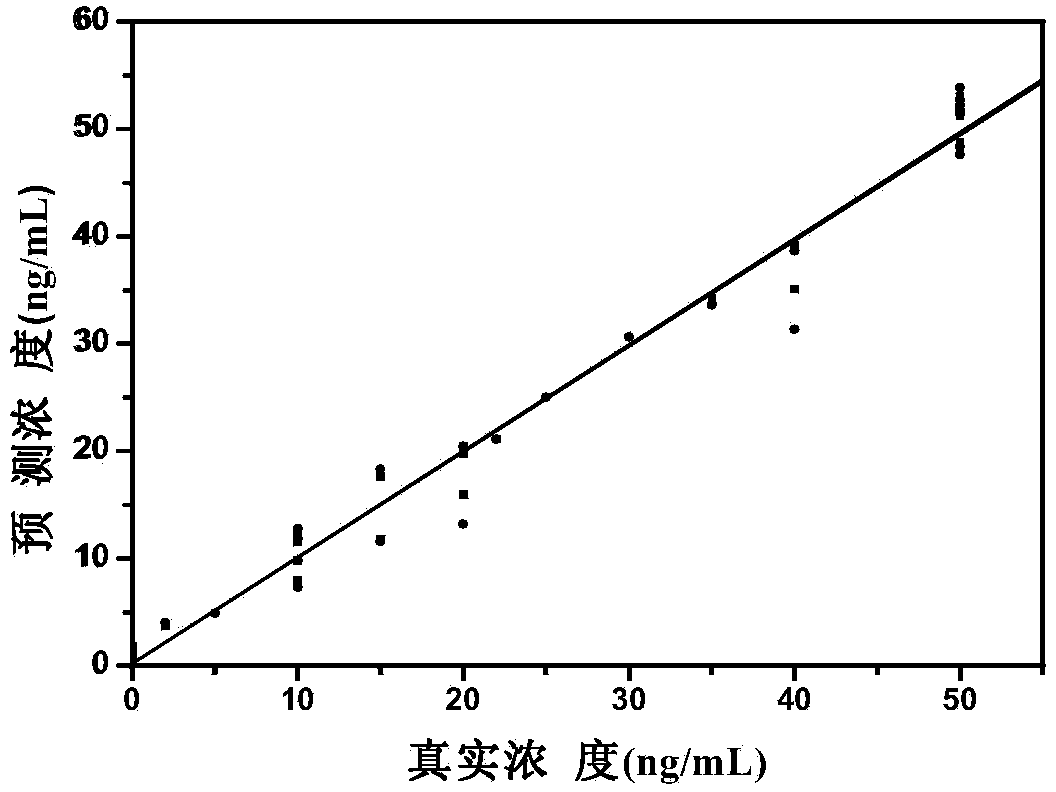Bisphenol A content detecting method
A detection method and content technology, which is applied in the detection field of bisphenol A content, can solve problems such as the narrowing of the synchronous fluorescence spectrum band, achieve good prediction effect, fast simultaneous resolution and quantitative analysis, and simplify the spectrum
- Summary
- Abstract
- Description
- Claims
- Application Information
AI Technical Summary
Problems solved by technology
Method used
Image
Examples
Embodiment 1
[0031] For the preparation of mixed standard solutions of bisphenol A, phenol and octylphenol, 37 mixed standard solution samples composed of three kinds of phenols in different concentration ratios were randomly divided into two groups, and one group was a calibration set, including 30 three kinds of phenols. The mixed standard solutions of phenols; the other set is a verification set, including 7 mixed standard solutions of three kinds of phenols. The real concentration values of bisphenol A in 37 samples were calculated according to the designed concentration ratio, and the concentration ratio of bisphenol A, phenol, and octylphenol in each sample calibration set of the quantitative calibration model is shown in Table 1. Table 2 shows the content and predicted recovery of bisphenol A in artificially synthesized samples predicted by the established PLS quantitative calibration model.
[0032] Table 2
[0033]
[0034] The content of bisphenol A is detected by the const...
Embodiment 2
[0045] The established quantitative calibration model was used to predict the content of bisphenol A in actual samples to verify the applicability of the method. Bisphenol A in polycarbonate plastics was extracted by soaking method. Six samples of the same polycarbonate sample were pipetted, and the constant-wavelength synchronous fluorescence spectrum of the soaking solution was scanned when the wavelength difference ? was 80nm. The established quantitative calibration model was used to predict the concentration of bisphenol A. The established quantitative calibration model predicted the content of bisphenol A in soaked samples and its relative standard deviation is shown in Table 4.
[0046] Table 4
[0047]
[0048] The average content of bisphenol A in the sample is 0.51 μg / g, the standard deviation of 6 parallel measurements is 0.06 μg / g, and the relative standard deviation is 11.7%. It can be seen that the reproducibility of the present invention meets the requirement...
PUM
 Login to View More
Login to View More Abstract
Description
Claims
Application Information
 Login to View More
Login to View More - R&D
- Intellectual Property
- Life Sciences
- Materials
- Tech Scout
- Unparalleled Data Quality
- Higher Quality Content
- 60% Fewer Hallucinations
Browse by: Latest US Patents, China's latest patents, Technical Efficacy Thesaurus, Application Domain, Technology Topic, Popular Technical Reports.
© 2025 PatSnap. All rights reserved.Legal|Privacy policy|Modern Slavery Act Transparency Statement|Sitemap|About US| Contact US: help@patsnap.com



